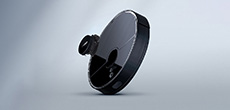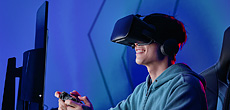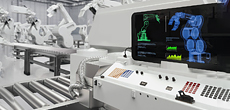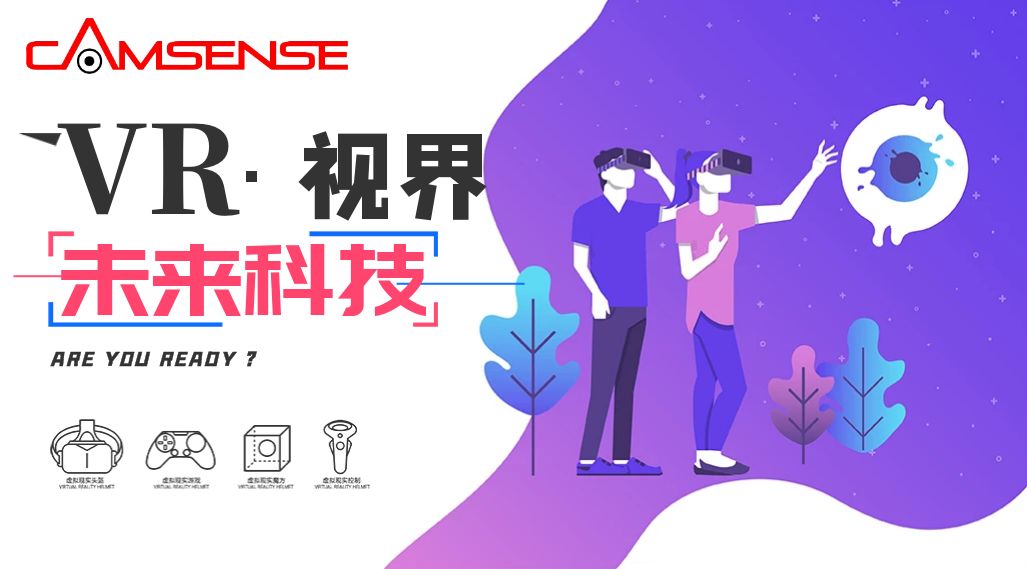A new round of scientific and technological revolution and industrial transformation with the new generation of information and communication technology as the main driving force is booming. The commercial application of 5G technology, unmanned driving, smart cities, and smart communities have become hot topics. The changes in the homes of ordinary people: smart speakers, smart screen TVs, smart sweeping robots...
In the field of smart home, with a single product of sweeping robot, the data predicts that China's sweeping robot market will have a scale of 50 billion. However, GFK data shows that the product penetration rate of Chinese home service robots in coastal cities is only 5%, and only 0.4% in inland cities, which is still a big gap compared with 16% in developed countries. The main reason for this is that the price of sweeping robots is too expensive, and the price of sweeping robots that cost thousands of yuan at every turn discourages many consumers; another reason is that the proportion of intelligent sweeping robots currently counted is about 3%, and most sweeping robots Still in the "mentally retarded" stage, such as those who are stuck in a small space and unable to move, those who sweep the excrement of cute pets in every corner of the house, and those who are not able to charge themselves and work "killed"... Now , an innovative company in Shenzhen that focuses on the research and development of computer vision positioning technology. Through algorithm innovation and self-developed chips, it has developed a unique robot depth ranging product, which not only has excellent performance, but also greatly reduces the cost. This is expected to significantly reduce the price of robot ranging modules, clear the price threshold of sweeping machines in key core components, and accelerate the popularization of sweeping robots.
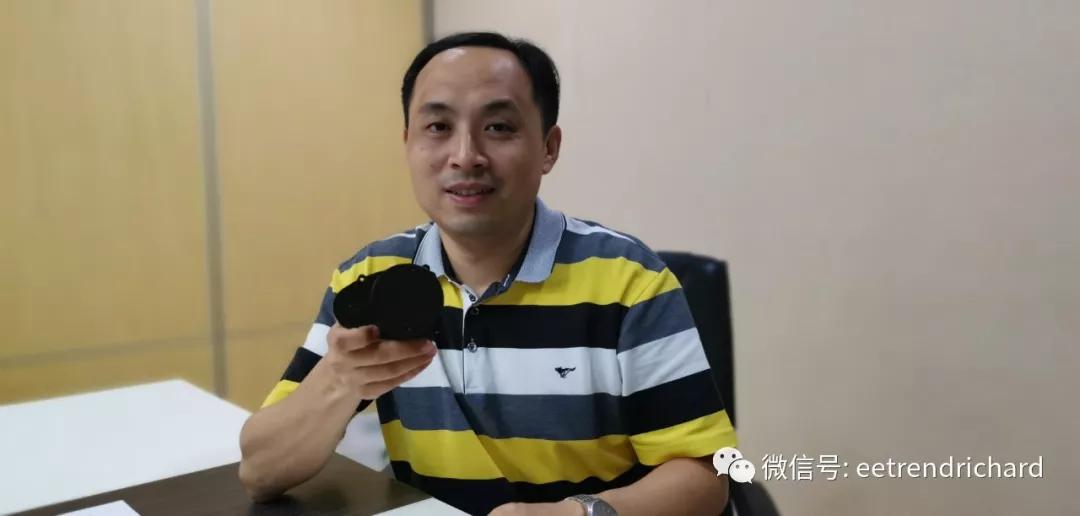
Camsense's founder and CEO Christopher
This company is Camsense [Shenzhen Camsense Technology Co., Ltd.]. It was established in 2014 and has been committed to the development of computer vision technology. Its founder and CEO Christopher is an engineering master tutor at Tsinghua University, mainly engaged in computer vision and image processing. Research, has been deeply cultivated in this field for 17 years. Recently, the author interviewed Christopher to learn more about Camsense's innovative technology.
The challenges
Christopher first showed the author a module, which is the picture above. This is Camsense® X1, a high-performance lidar product for the field of sweeping robots launched by Camsense in 2018. Its performance indicators have reached the industry-leading level. It is understood that the product was launched in August 2017 and officially mass-produced in September 2018. In just one year, processes such as research and development, a large number of internal tests and joint testing by early customers were completed. The Camsense® X1 has a high level of distance measurement and measurement accuracy.
Christopher once pointed out at the 2019 Greater Bay Area International Science and Technology Summit that there are three core technologies for robot development: nervous system, perception network, and motion system. The nervous system is mainly to make the robot think and make decisions like the human brain, which involves big data technology related to artificial intelligence; the perception system needs various sensors, such as vision sensors, cameras, lidar, millimeter-wave radar, etc.; The motion system requires the help of technologies such as radar. All three are critical, but perception systems have long been overlooked and underestimated until the last few years.
"The intelligent work of the sweeping robot is the first to solve the problem of autonomous navigation and obstacle avoidance. In the early sweeping robot products, the path planning problem was mainly solved through a simple collision sensor + basic gyroscope. The robot is not looking at the road, but At the same time, the records of the places you have swept are not accurate, so the cleaning results are all based on luck." Christopher said, "In 2010, the American company Neato introduced lidar into the sweeping robot for the first time, improving the The cleaning effect is improved, but the problem is that lidar is expensive and difficult to popularize.”
With the development of technology, the cost of the entire lidar industry has dropped significantly, and more and more sensors are equipped with sweeping robots. As the "eyes", lidar has become the standard configuration of sweeping robots. It has become a market consensus. For example, 360's T90 sweeping sensor is equipped with 22 kinds of sensors, and its "eyes" are lidars equipped with Camsense.
Lidar navigation efficiency is very high, user experience is good, ranging is accurate, and it can work both day and night, and it is superior to other solutions in modeling navigation.

How does Camsense break through?
Christopher said that in the past, the cost of lidar in sweeping robots accounted for more than 20% of the cost of the robot, which made the product only high-end and difficult to popularize, so this cost was the biggest pain point, and robots that rely on "touch" navigation also affected In the final analysis, there is a lack of a low-cost and high-precision autonomous navigation solution. Camsense takes this as a breakthrough.
The lidar used by the sweeping robots on the market is generally aimed at Neato, which adopts the technical route of industrial-grade Sensor+DSP chips. Although the performance is good, the cost problem has not been solved. The Camsense uses the original consumer-grade area array Sensor+ self-developed ASIC chip, which reduces the cost while ensuring product performance even exceeding industry standards. It is understood that the LiDAR Camsense® X1 based on this technology has a vertical field of view of 30-40 degrees and a frame rate of 2080Hz, saving downstream customers about 40% in cost.
"Lidar has several ranging methods. The first is the visual sensor technology of geometric ranging. It mainly uses basic principles to measure distances by taking pictures of images. This technology is suitable for slow-moving robots and is suitable for indoor use. Short-range ranging. The other is the time-of-flight lidar sensing technology (TOF), which is suitable for long-distance ranging for outdoor high-speed motion. TOF is not accurate when the distance is close.” Christopher pointed out, “So what we use is Vision sensor technology based on geometric odometry.”
"Our solution is essentially based on visual sensors, but we use a laser light source, and the light source rotates 360 degrees, so we also call it a laser sensor, but it is different from the LiDAR in the automotive field, which relies on laser emission and reflection to measure distance, and millimeter waves. The same, the essence is to use the principle of electromagnetic waves." He explained, "We use a laser light source to create a pattern, and then the camera captures the pattern, and the distance can be calculated using the geometric relationship. This is the positioning principle of our consumer-grade products. The positioning accuracy can reach centimeter level.”
In addition, Camsense also has a high-precision positioning system, Camsense® M Pro, which is essentially a combination of a laser light source and a vision sensor. The positioning system arranges light sources around the periphery, and the positions of the light sources are known. The PnP principle is used to measure the distance, and finally the positioning accuracy of the 0.5mm level is achieved.
This system is mainly used in the field of industrial robots, which can assist customers in product development and testing, industrial testing, etc. It has been commercialized in laboratories such as China Testing, 360, Haier, and Midea. Camsense became the only company in the industry to provide both lidar and high-precision visual tracking systems.
Regarding the principle of this PnP, you can look at the following explanation:
To use the PnP principle for measurement and positioning, it is necessary to know the geometric model of the object to be measured in advance. The more accurate the geometric model is, the more accurate the positioning accuracy will be. When measuring, it is necessary to first extract at least four interesting points that are not coplanar on the measured object, and then according to the geometric model constraints between these points, the spatial position, posture and geometric size of the object can be uniquely solved.
Monocular space measurement and localization based on single frame
Because the single-frame-based monocular measurement needs to know the geometric model of the object to be measured in advance, so that constraints can be introduced in the calculation process for verification, so the spatial position and attitude of the object can be measured very accurately. For example, the positioning system of Oculus can achieve a positioning accuracy of 2-3mm, which is an order of magnitude higher than the binocular camera of Sony PSVR.
Data shows that in 2018, the scale of China's machine vision market exceeded 10 billion yuan for the first time. With the improvement of industry technology and a wider range of product applications, the machine vision market will further expand in the future. It is estimated that the market size in 2019 will be nearly 12.5 billion yuan. With the in-depth popularization of artificial intelligence technology, the machine vision market is bound to expand rapidly, and Camsense with innovative technology will also usher in rapid growth!
